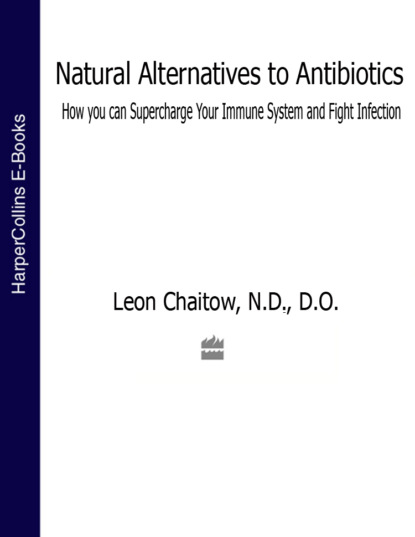По всем вопросам обращайтесь на: info@litportal.ru
(©) 2003-2024.
✖
Natural Alternatives to Antibiotics: How you can Supercharge Your Immune System and Fight Infection
Автор
Год написания книги
2019
Настройки чтения
Размер шрифта
Высота строк
Поля
failure of patients to complete courses of treatment – leading to mutant, resistant strains
deteriorating public health services due to economic constraints
poor training of health care workers in diagnosing and treating TB
delays in obtaining laboratory test results
use of only single-drug approaches to treat the infection (see below)
a dramatic increase in the numbers of susceptible people, often involving those who are impoverished and therefore malnourished, and/or homeless, and/or HIV positive and/or drug abusers
increasing migration into Western urban settings of people from areas where TB is endemic.
Many of these factors are beyond easy solution, and are political and economic in origin rather than medical. In other words, if everyone were well housed, well fed, well cared for and did not engage in practices which damage their immune systems, TB would vanish.
For successful care of TB today, there needs to he:
sound nutrition and hygiene
supervision which ensures that courses of antibiotic treatment are completed
the correct selection of a combination of antibiotic medications.
A treatment approach which involves using a combination of antibiotic drugs against the infection has been found to present the best option, since this offers multiple ways of killing or deactivating the invader.
When only single drugs are used, even if the course is followed through, Mycobacterium tuberculosis can respond with dramatically rapid genetic modifications in order to protect itself.
The number of cases in which treatment fails completely in dealing with TB is still relatively small, however when multiple drug-resistant tuberculosis (MDR-TB) does occur it is usually fatal, especially when this occurs in someone whose immune system is already compromised, for instance a person with an existing HIV infection or who is severely malnourished, such as a persistent drug abuser.
Sadly, hospital outbreaks of MDR-TB are increasing. Some of the reasons for this have been mentioned, but a summary is offered on pages (#ulink_653e138e-07e4-595d-8034-0f0541d9f3d8) of other reasons why many bacteria have become immune to attack by antibiotics.
This is the cast – the good, the bad, and the frightening – we now need to become familiar with the way medicine tries to control them.
3: The Story So Far: A Brief History of Antibiotic Use (#ulink_13ee5d89-5d66-524f-b098-1dadd8ca5d37)
Before looking at antibiotics themselves, we should briefly examine antibacterial approaches, some of which are still in use, which preceded the discovery of antibiotics.
Before 1935 there were few successful medical methods for treating infections apart from procedures which went back hundreds of years, such as the use of an extract of cinchona bark for the treatment of malaria (from which quinine was eventually derived) and the use of ipecacuanha for some forms of dysentery.
During the early 20th century a few medications were developed in Germany for treatment of parasitic infections, but there were no antibacterial medications as such until the discovery of sulfur drugs, which were able to save lives in conditions which had previously been virtually untreatable.
The Sulfur Drugs
In 1935 it was announced that a drug had been developed, in Germany, of a sulfur derivative which could be used to treat commonly fatal streptococcal infections such as puerperal fever.
In the early 1930s over 1,000 young women were dying every year, in the UK, after childbirth because of infection of the bloodstream, from puerperal fever. Well over 100 out of every 100,000 births resulted in the mother becoming fatally infected in this way at this time.
When the new sulfonamide antibiotics were introduced in the mid-1930s, the figures for deaths from puerperal fever dropped dramatically, so that by 1940 the figure was down to around 20 deaths per 100,000 births. After the introduction of penicillin in the early 1940s, this figure dropped further so that there were fewer than 10 deaths per 100,000 births by 1950.
It was soon shown by research that the antibacterial effect of this drug resulted from the release from it, in the body, of a sulfur compound (sulfanilamide). This led to further research resulting in the production of sulfapyridine in 1938, which was capable of strong antibacterial effects against the microorganism responsible for pneumococcal pneumonia (see Chapter 2).
Research into sulfur drugs continued (and continues, although many scientists believe that drugs of this sort are no longer of much importance or usefulness). Professor Richard Lacey, writing in Geoffrey Cannons’s comprehensive examination of the phenomenon of resistance, Superbugs (Virgin, 1995) says
Avoid all sulphonamides, except co-timoxazole in one special special situation – Pneumocystis carinii which is common in AIDS patients. [These drugs are] relatively toxic [many ill-effects]; obsolete. Better restricted for use in agriculture, as long as resultant meat and other human food contains no residues.1
So what are the side-effects of sulfur drugs, which are still widely used?
Formation of crystals can take place in the urine, which causes kidney blockage. This is said to be rare nowadays if the correct dosage is taken, but very serious if it does occur. Blood in the urine is an early sign.
A moderately severe fever and skin rash and damage to blood cells is an uncommon but possible hypersensitivity reaction.
Rarely, a severe reaction can occur in which a fever plus a skin rash also involves extensive ulceration of the mouth and/or the vagina. The eyes may become involved, leading commonly to blindness. This sometimes fatal condition is known as the Stevens-Johnson syndrome and usually relates to long-acting sulfur drugs, and is more common in young patients than adults. It is important to realize the degree of rarity of this sort of reaction – with an estimate of between 1 and 2 cases per 10 million doses prescribed.
Inflammation of the arteries can occur, as can inflammation of the heart muscle.
Damage to the bone marrow may occur, leading to several conditions – some serious – involving different blood cells, reduction in white blood cell levels, and various forms of anemia.
Liver damage may occur, as may lung diseases, but reports of these are extremely rare.
WHEN ARE SULFUR DRUGS NOW USED?
urinary tract infections – in combination with other drugs in treatment of Pneumocystis carinii, commonly in people with immune deficiency
sometimes in recurrent ear infections in children
previously widely used in meningitis and bacterial infections of the intestines, but less so now because of widespread resistance by the bacteria
for some sexually transmitted diseases such as chlamydia
sometimes in treating malaria and for some parasitic infections
in long-term control of conditions such as ulcerative colitis and Crohn’s disease.
Much of the early research into antibiotics was diligent and painstaking, although some of the discoveries were almost accidental:
Fleming’s original revelation of the antibacterial effect of penicillin was a stroke of luck rather than genius. The spores of the mold from which the first penicillin was extracted had apparently floated out of one window (of a room where molds were being studied) in St. Mary’s Hospital in London and onto culture dishes lying in Fleming’s laboratory.
Later another mold, now used for penicillin production (Penicillium chrysogenum), was discovered on a moldy melon (cantaloupe) found in a market in Peoria, Illinois.
In 1953 an antibiotic (Helenine) which was used to treat some viral infections was isolated from Penicillium funiculosum after being noticed growing on the transparent (isinglass) cover of a photograph of the wife of the discoverer, a Dr Shope (his wife’s name was Helen, hence the name given the antibiotic).
Many antibiotics have been discovered in molds which live in the soil, where for millions of years microorganisms have competed with each other for nutrients and territory, and so have developed ways of attacking each other and of defending themselves. Not surprisingly, out of the tens of thousands of chemicals which these organisms produce to harm each other or defend themselves, some have been found which can be used in humans, to kill or damage other microorganisms which may be causing infection – without causing (too much) harm to the person being treated (though this is the hope rather than the reality, as we shall see).
Cephalosporin antibiotics – such as the widely used antibiotics cefaclor and cefoxitin – were originally derived from microbes (molds) found in sewage.
There are now literally tens of thousands of different antibiotic variations (see Chapter 4 for a summary of the differences and details of some of the major versions) and hundreds on the market, leading to great confusion in the minds of those who have to prescribe them. It is hard to know which (if any) is superior in many cases. Sometimes such decisions are easy and clear, but more often the doctor who has to prescribe has to make choices based on inadequate information. As Professor Garrod has stated,
‘A confident choice between them, for any given purpose, is one which few prescribers are qualified to make – indeed no one may be, since there is often no significant difference between the effects to be expected.’









